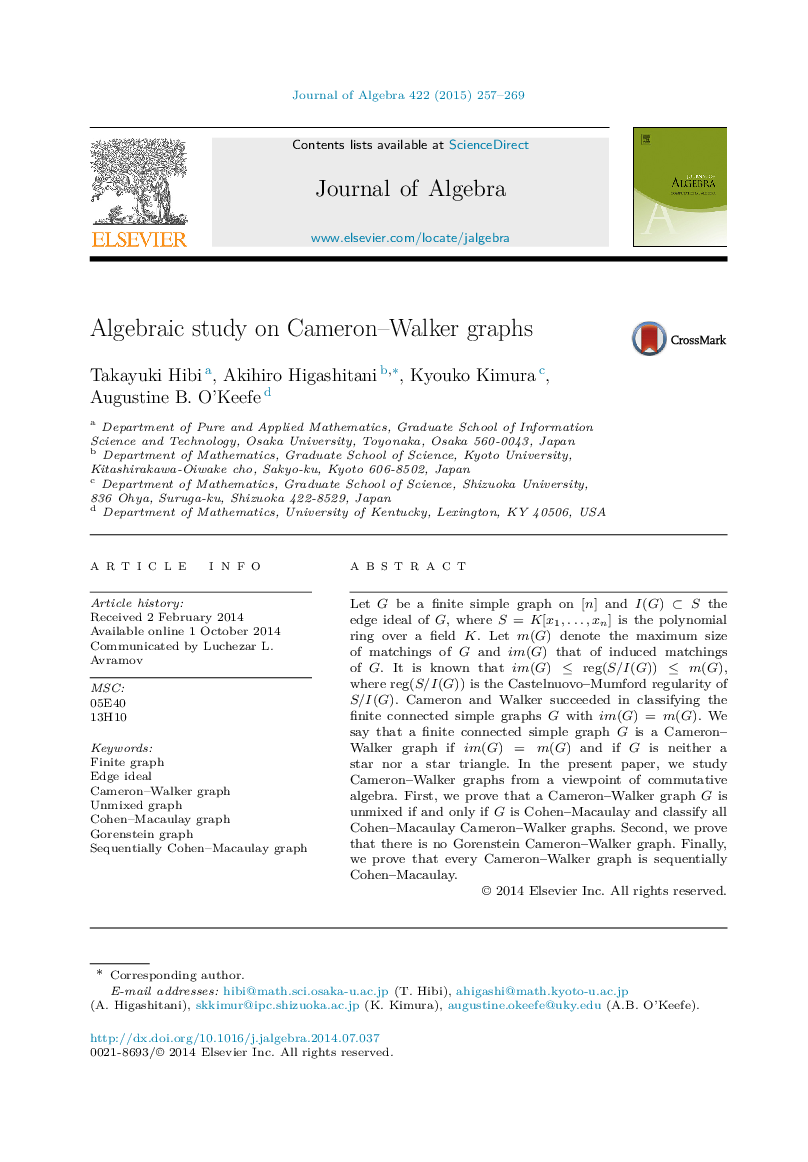| Article ID | Journal | Published Year | Pages | File Type |
|---|---|---|---|---|
| 4584590 | Journal of Algebra | 2015 | 13 Pages |
Let G be a finite simple graph on [n][n] and I(G)⊂SI(G)⊂S the edge ideal of G , where S=K[x1,…,xn]S=K[x1,…,xn] is the polynomial ring over a field K . Let m(G)m(G) denote the maximum size of matchings of G and im(G)im(G) that of induced matchings of G . It is known that im(G)≤reg(S/I(G))≤m(G)im(G)≤reg(S/I(G))≤m(G), where reg(S/I(G))reg(S/I(G)) is the Castelnuovo–Mumford regularity of S/I(G)S/I(G). Cameron and Walker succeeded in classifying the finite connected simple graphs G with im(G)=m(G)im(G)=m(G). We say that a finite connected simple graph G is a Cameron–Walker graph if im(G)=m(G)im(G)=m(G) and if G is neither a star nor a star triangle. In the present paper, we study Cameron–Walker graphs from a viewpoint of commutative algebra. First, we prove that a Cameron–Walker graph G is unmixed if and only if G is Cohen–Macaulay and classify all Cohen–Macaulay Cameron–Walker graphs. Second, we prove that there is no Gorenstein Cameron–Walker graph. Finally, we prove that every Cameron–Walker graph is sequentially Cohen–Macaulay.
